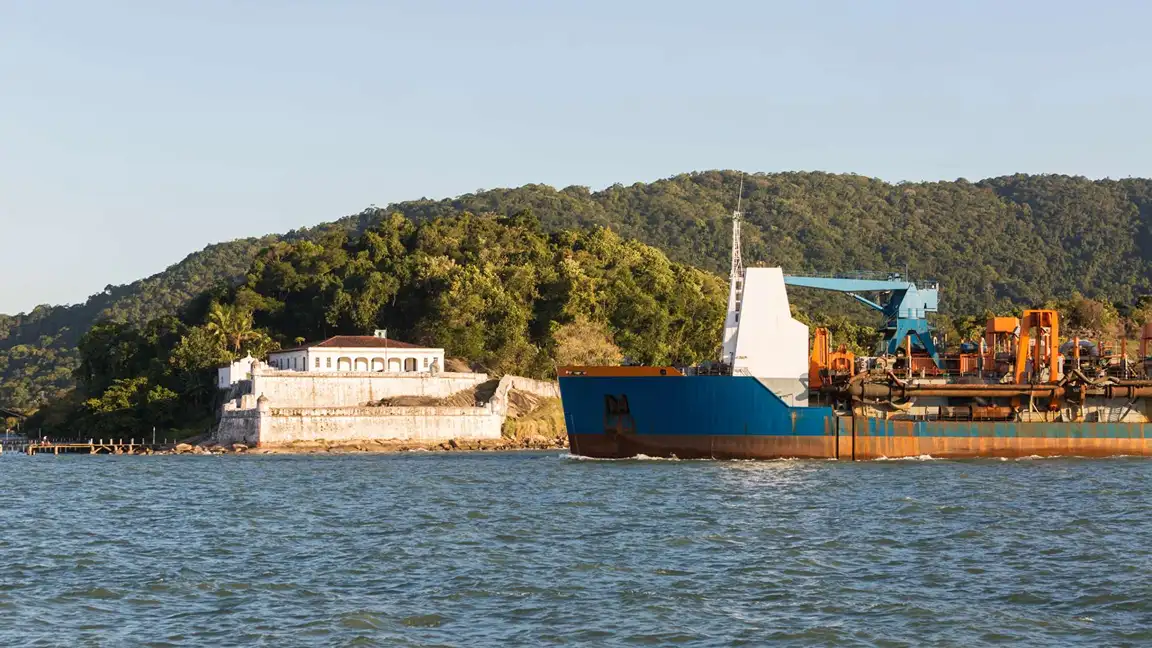Introduction
Santos Port, the largest port in the Southern Hemisphere, is setting an ambitious course for the future of Brazilian trade. The Santos Port Authority plans to deepen the port’s draught to accommodate larger vessels, enhancing its strategic importance on the global maritime map. This dredging initiative highlights the critical role that port depth plays in maintaining competitive shipping operations and strengthening international trade ties.
Current Status of Santos Port
Santos Port serves as a vital hub for Brazil’s export economy. In 2024, the port handled a record-breaking 179.8 million tonnes of cargo. It features 58 terminals, 16 kilometers of docking piers, and 62 berths. The port operates similarly to major European ports, with all terminals managed by private companies. About 60% of the cargo passing through Santos consists of agricultural commodities like soybeans, corn, cotton, and pulp, reflecting Brazil’s strong agribusiness sector.
The Dredging Strategy
To accommodate the growing size of commercial vessels and meet future demand, Santos Port plans to increase its draught first to 16 meters and later to 17 meters by 2031. This phased dredging project aims to boost port capacity, reduce congestion, and improve turnaround times. Larger vessels can carry more cargo per trip, making trade more cost-efficient and environmentally sustainable.
Economic and Trade Implications
Deeper waters will allow Santos Port to attract larger ships and increase throughput. This will not only strengthen Brazil’s trade partnerships—particularly with countries like China—but also position Santos as a more competitive port in the global shipping industry. The port’s director of operations, Beto Mendes, forecasts a rise in volume to approximately 188 million tonnes by 2025. This estimate excludes potential surges linked to evolving global trade patterns, such as U.S.-China tariff shifts.
The Impact of Global Trade Dynamics
As geopolitical factors like trade wars reshape supply chains, ports must stay adaptive. Santos Port’s strategy shows foresight in anticipating increased shipping volumes due to shifting alliances and trade flows. According to Mendes, changes in U.S. policy under President Donald Trump have already spurred higher demand for Brazilian exports in Asian markets, underlining the port’s pivotal role.
Private Sector Involvement
Unlike some government-run facilities, all Santos Port terminals are operated by private firms. This structure enables more flexible and efficient operations while leveraging private investment in infrastructure improvements, including dredging. Public-private partnerships have been key to the port’s success, ensuring that it remains agile in responding to industry needs.
Lessons for Other Ports
Santos Port’s experience demonstrates the importance of proactive dredging and long-term planning. Port depth is not just a technical metric—it determines a port’s ability to handle modern shipping demands. Other ports aiming to remain competitive must invest in similar upgrades and align their strategies with future maritime trends. Collaborative efforts between public authorities and private operators are essential to these endeavors.
Conclusion
The dredging strategy at Santos Port is more than an infrastructure project—it’s a blueprint for future-ready port operations. By prioritizing deeper draughts, the port is paving the way for larger vessels, increased trade, and stronger economic resilience. As global shipping continues to evolve, the decisions made today about port depth will define tomorrow’s trade capabilities. Santos Port’s forward-thinking approach offers valuable lessons for maritime authorities worldwide seeking to keep pace with the ever-growing demands of international commerce.
